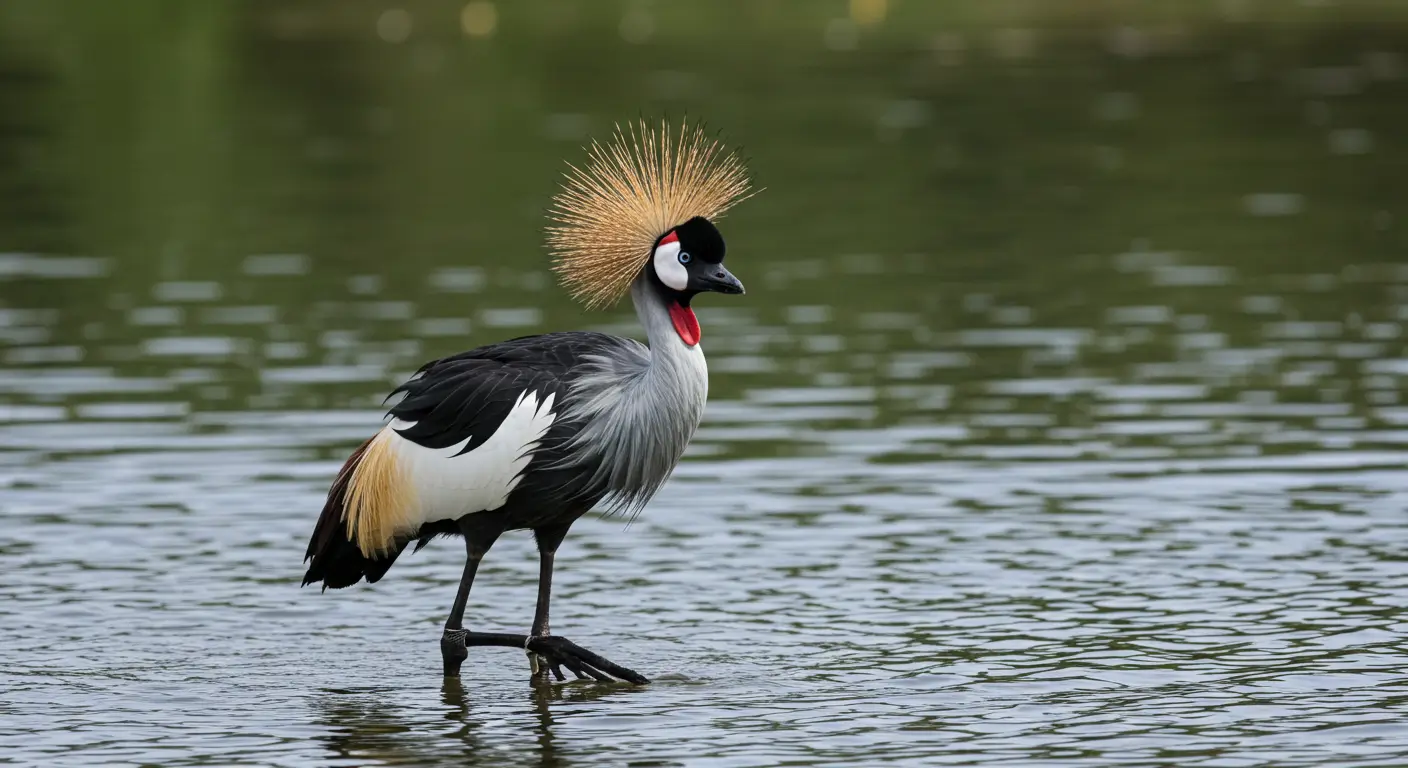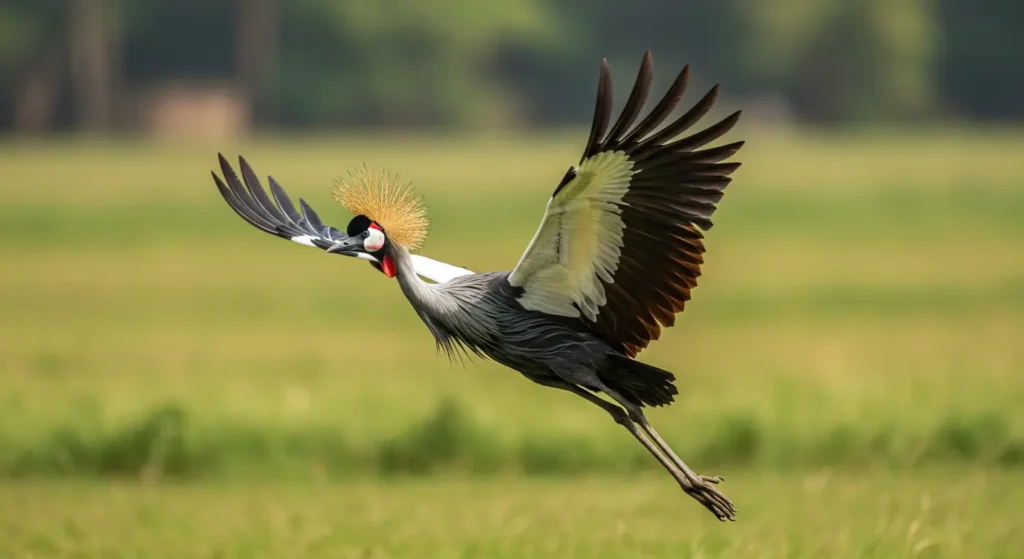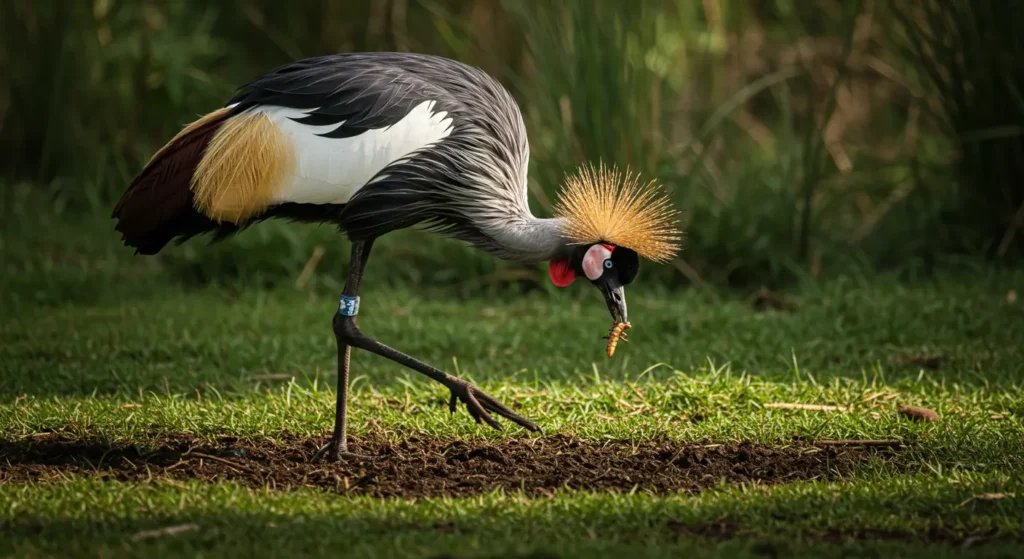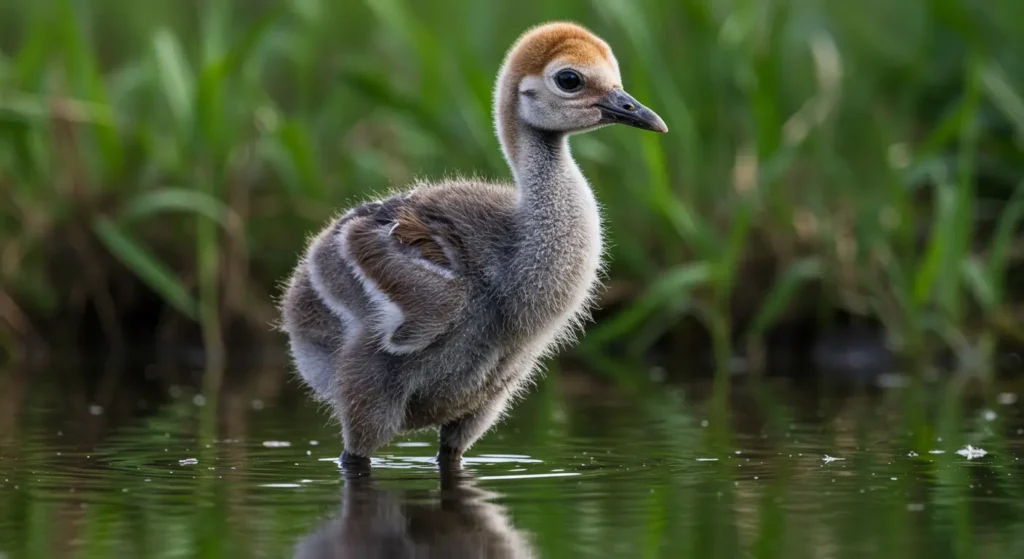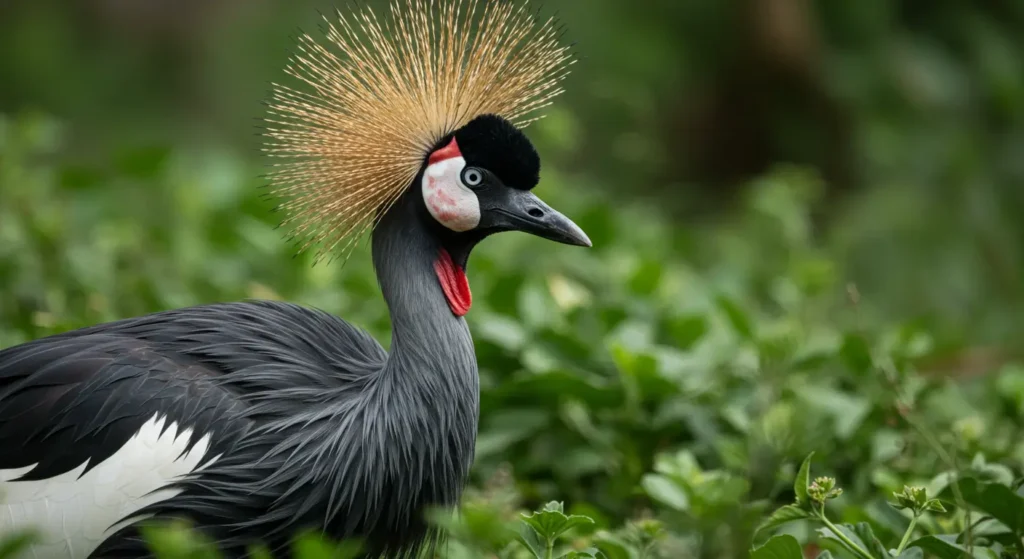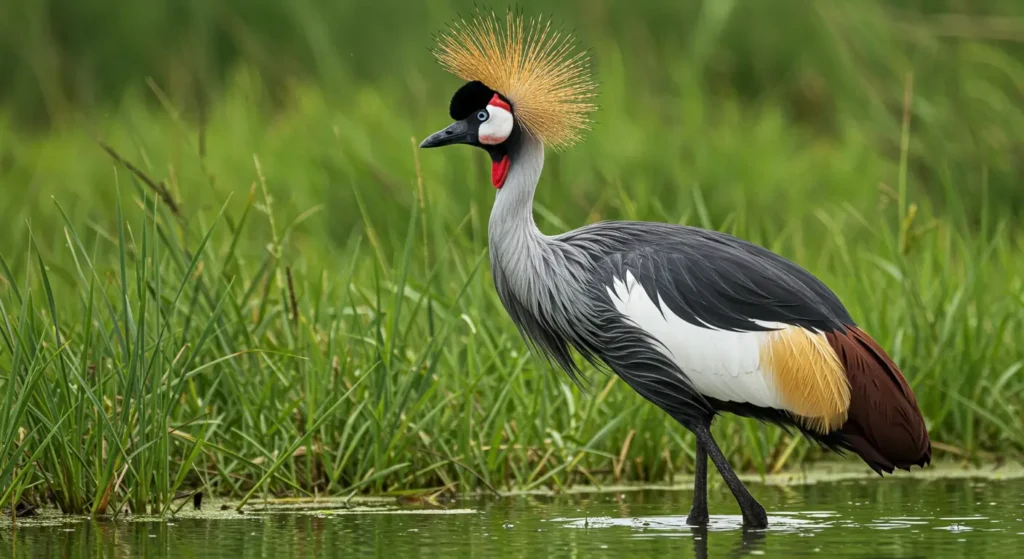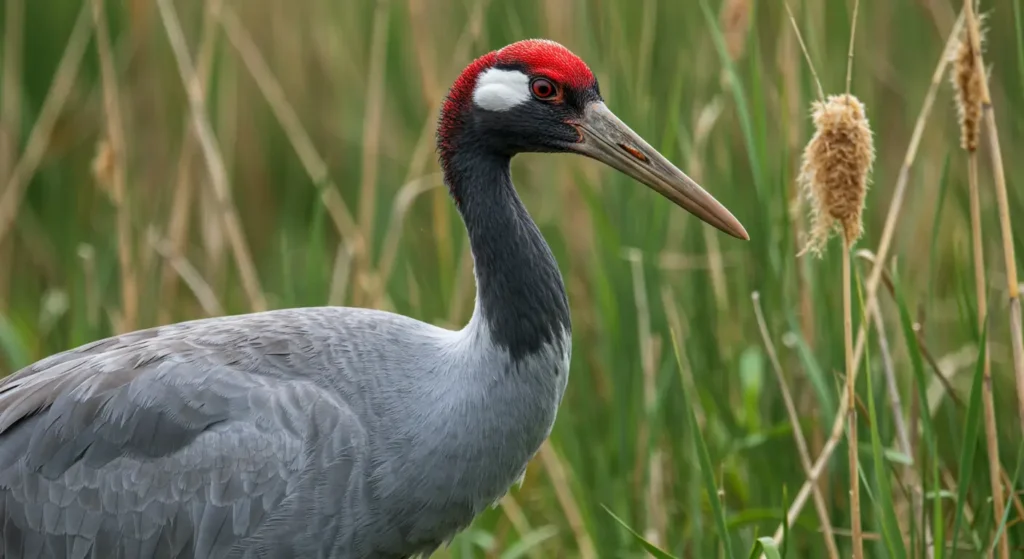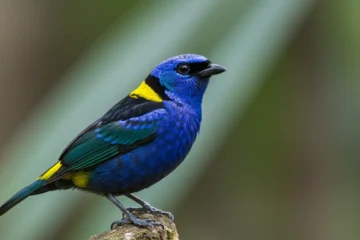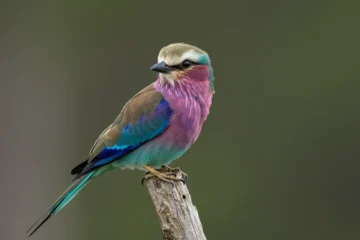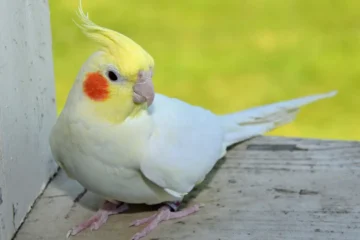The Crowned Crane is a beautiful and tall bird known for its catchy golden feathers. They form a crown-like shape on its head. This bird is also found in zoos and wildlife parks. Crowned Cranes are known for their graceful dances during mating season.
They have a loud and booming call that carries over long distances. These birds prefer open spaces with access to water. Their unique appearance and gentle nature often make them a crowd favorite wherever they’re seen.
Images of Crowned Crane
Price of Crowned Crane
A Crowned Crane can be bought for around $10,000 to $15,000 depending on age and breeder. Their ownership requires permits and legal paperwork.
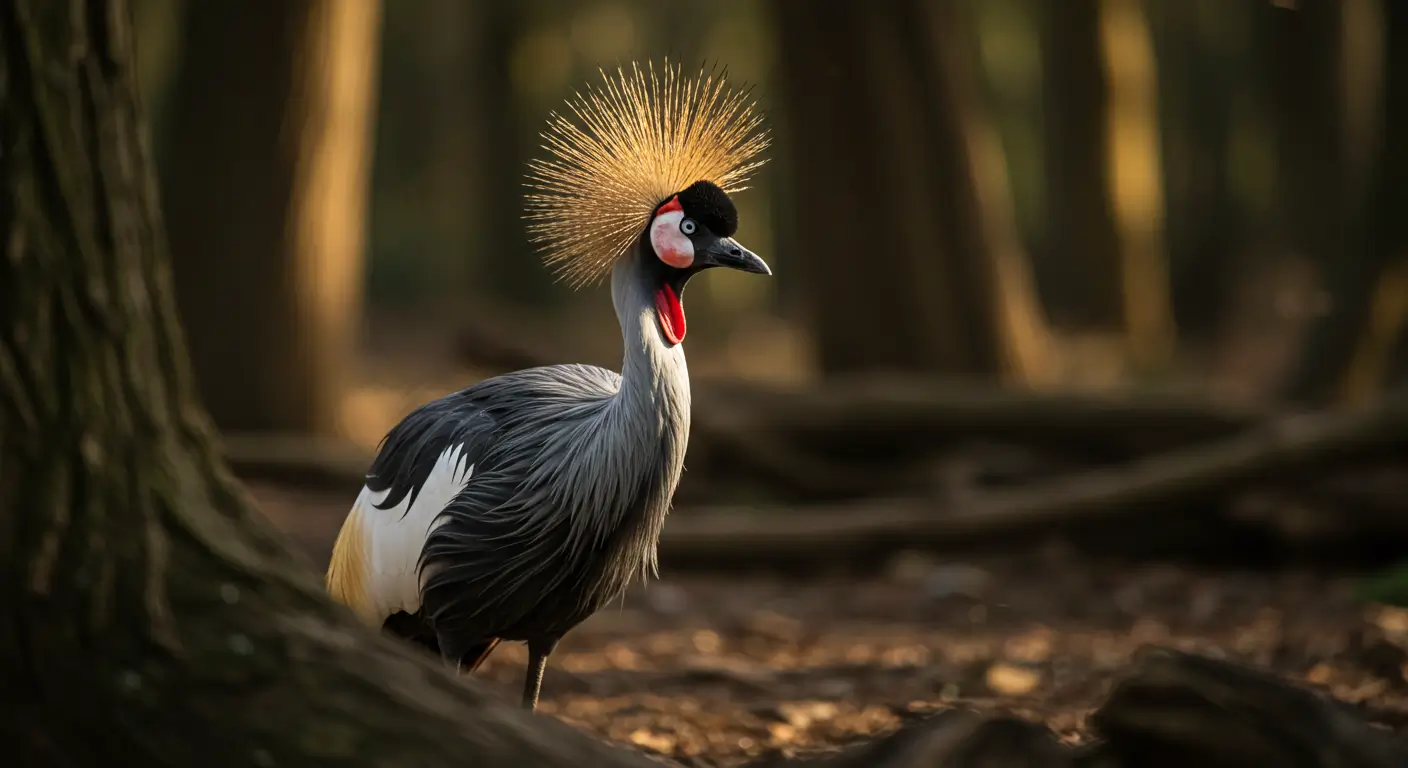
General Characteristics of Crowned Crane
This bird is quite social and grabs public attention with its unique features. Here are some general characteristics of Crowned Crane.
Crowned Cranes live around 20 to 25 years in the wild. Their age can reach up to 30 years in captivity with proper care. Their lifespan improves with safe habitats and regular veterinary support. This bird has some interesting habits behind its back which can grab the attention of the public in a short period of time. Here are some exciting facts regarding this bird: Fossil records show that Crowned Cranes have existed for over 10 million years. That makes them one of the oldest surviving bird species on Earth. They’ve outlived many other ancient creatures through major environmental changes even though they look quite delicate. Crowned Cranes have an unusual sleeping habit and they often rest on one leg while standing. This behavior helps reduce muscle fatigue and maintain body warmth. It also keeps them ready to react quickly if danger approaches in the wild. Crowned Cranes have a long and flexible windpipe. This allows them to produce a wide range of loud and booming calls. Their calls can travel for miles over open savannas and wetlands. This helps them communicate across long distances. Crowned Cranes are attractive dancers. They also have powerful wings and sharp claws. They can defend themselves quite effectively against smaller predators when threatened. These birds perform attractive dances involving head bobbing, wing spreading, jumping, and calling during mating season. Both males and females participate equally in these displays which makes them a symbol of partnership and balance. Crowned Cranes are monogamous and typically stay with the same mate for life. You’ll often see them moving around in pairs even outside of breeding season. This maintains their close bond using synchronized movements and calls. Crowned Cranes help control insect and small vertebrate populations. They help maintain a balanced ecosystem by feeding on insects, small fish, amphibians, and even rodents. This greatly benefits the wetland environments they inhabit. Crowned Cranes are capable of flying over 500 miles during seasonal movements despite their large size. They move between wetlands and grasslands depending on water levels and food availability. A parent Crowned Crane will spread its large wings wide when faced with danger. This creates a living shield for its chicks. This not only hides the chicks from view but can also confuse potential predators with the sudden display. Their “crown” isn’t soft like other bird feathers. It’s made up of stiff and wire-like feathers that stand upright. These bristle feathers catch sunlight beautifully and are believed to play a role in attracting mates. The Crowned Crane holds cultural significance in Africa, especially in Uganda. This is the country’s national bird and appears proudly on their flag and emblem. Its graceful appearance symbolizes elegance and prosperity for the country. Crowned Crane chicks are precocial. This means they hatch with open eyes and can walk within hours after hatching. They quickly learn to feed by watching their parents. This helps them survive early on in the wild. There have been observations of Crowned Cranes using sticks or grass to pick up insects from the ground. This behavior reflects a higher level of problem-solving capability than many expect from birds. Crowned Cranes can grasp branches and perch in trees using the long hind toe called a hallux. This is a rare feature among cranes because most species are strictly ground dwellers. This also helps them avoid predators at night. These birds are mostly seen in the zoo as they are not native to the USA. Here are some places in the USA in which Crowned Cranes: This bird should be captured in the camera using some expert photography tips because of its uniqueness among bird species. Catch Crowned Cranes early in the morning when the light is soft and the birds are most active. Use a telephoto lens to safely photograph them from a distance without disturbing their natural behavior. Focus on their golden crown feathers when the sunlight hits just right for a catchy glow. Stay patient and quiet because sudden movements can easily disturb these cautious birds. A Crowned Crane is a tall, elegant bird known for the crown of stiff golden feathers on its head. They can dance, bow, and jump during courtship displays, making them one of the most graceful bird species. Yes, some species like the Grey Crowned Crane are considered endangered due to habitat loss and illegal pet trade.
General Characteristic
Features Specific to Crowned Crane
Scientific Name
Balearica regulorum
Size
Around 3.3 feet tall
Weight
About 7–8 pounds
Color
Grey body, white wings, black head
Head Feature
Golden crown-like feathers
Behavior
Social and active
Sound
Loud honking calls
Diet
Seeds, insects, small animals
Habitat
Wetlands, grasslands, open savannahs
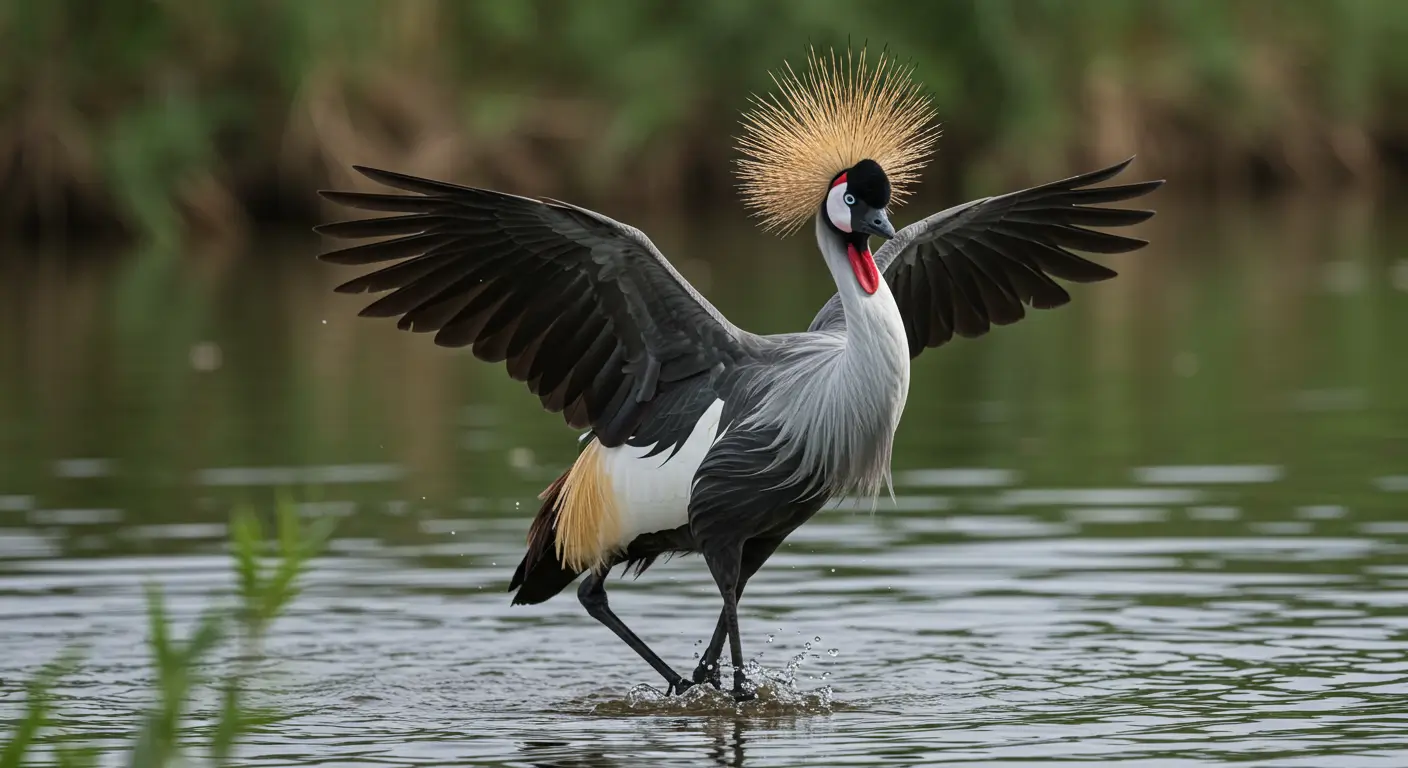
Life Span of Crowned Crane
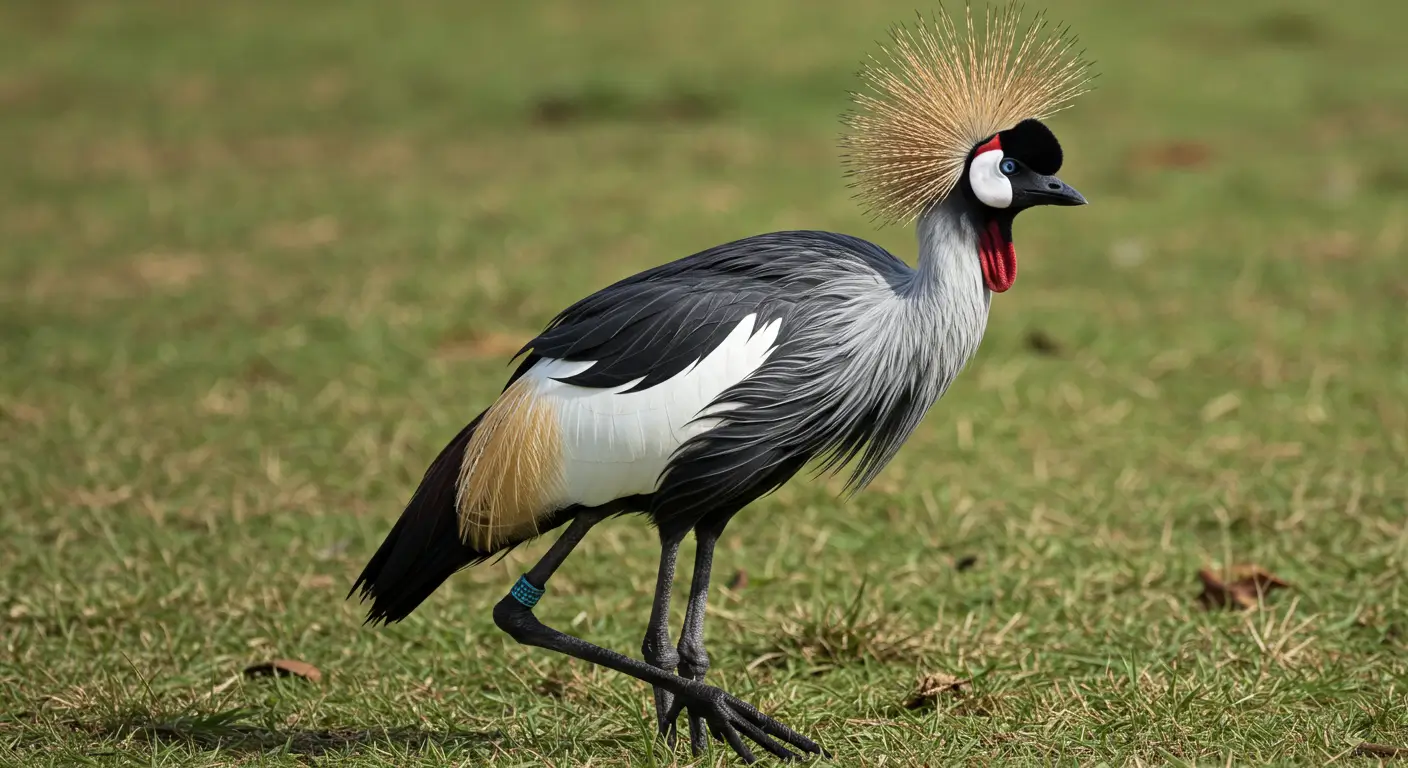
Interesting Facts Of Crowned Crane
1. Oldest Bird Species Still Alive
2. Sleep While Standing on One Leg
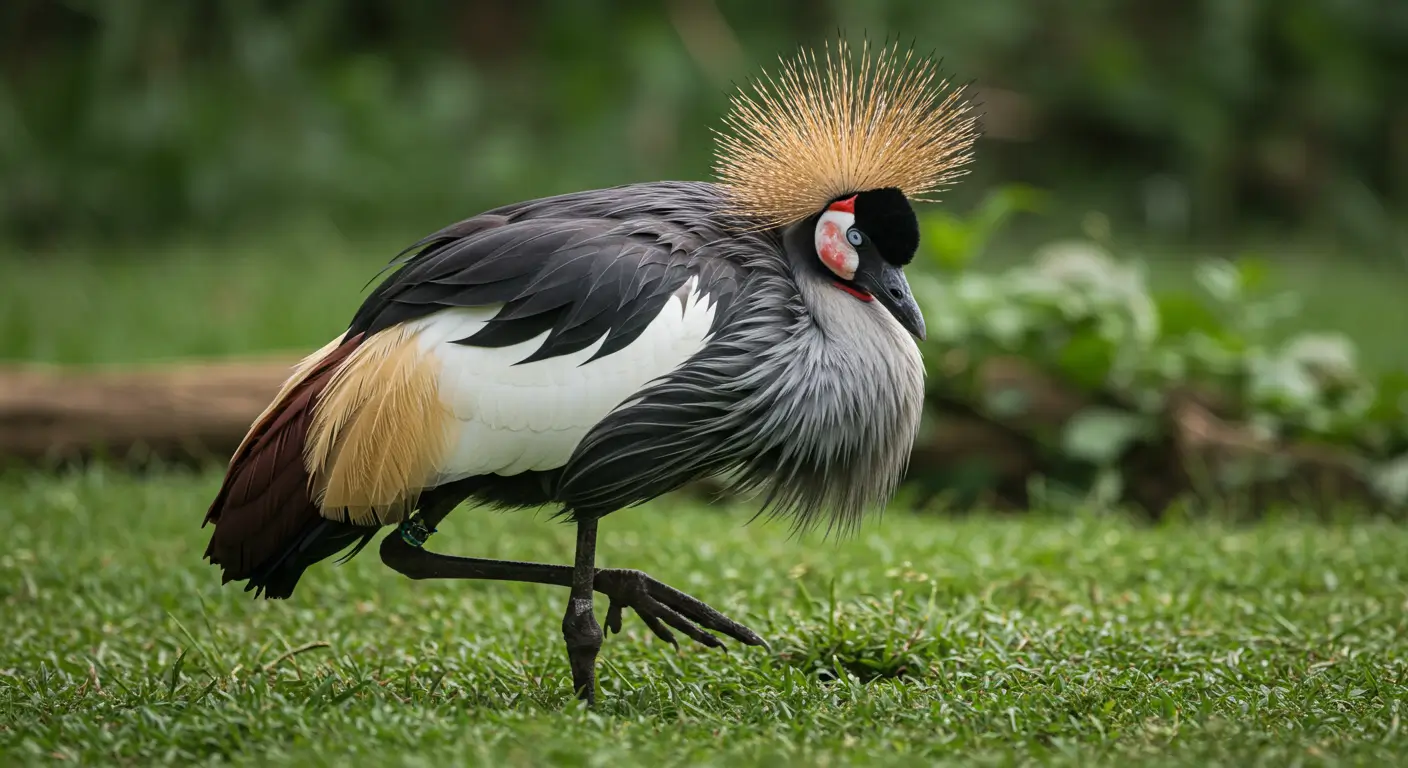
3. Flexible Trachea That Increases Their Calls
4. Balance Grace and Strength
5. Visible Courtship Rituals
6. Form Lifelong Pair Bonds
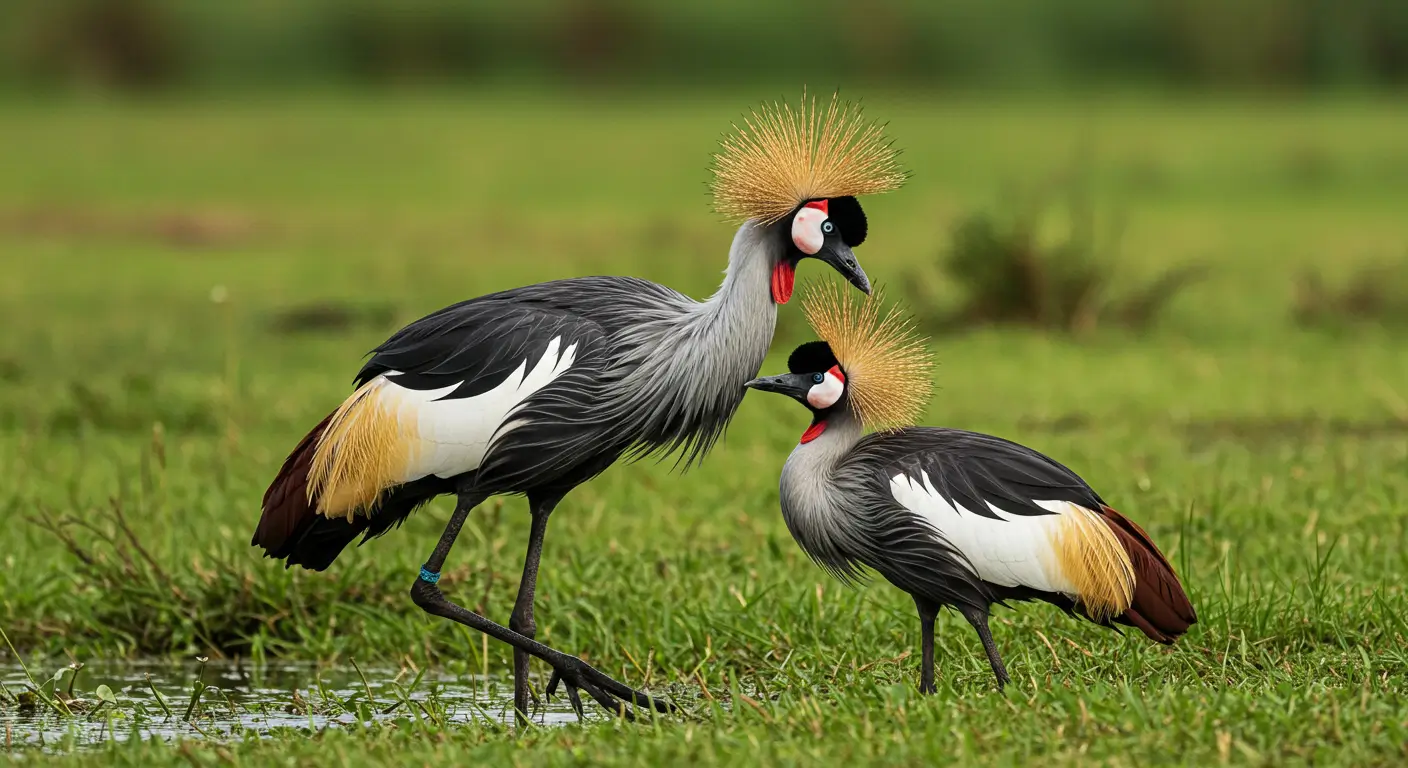
7. Important Role in Wetland Ecosystems
8. Fly Long Distances Despite Their Heavy Build
9. Use Wings as Shields to Protect Chicks
10. Crown is Made of Stif and Golden Bristles
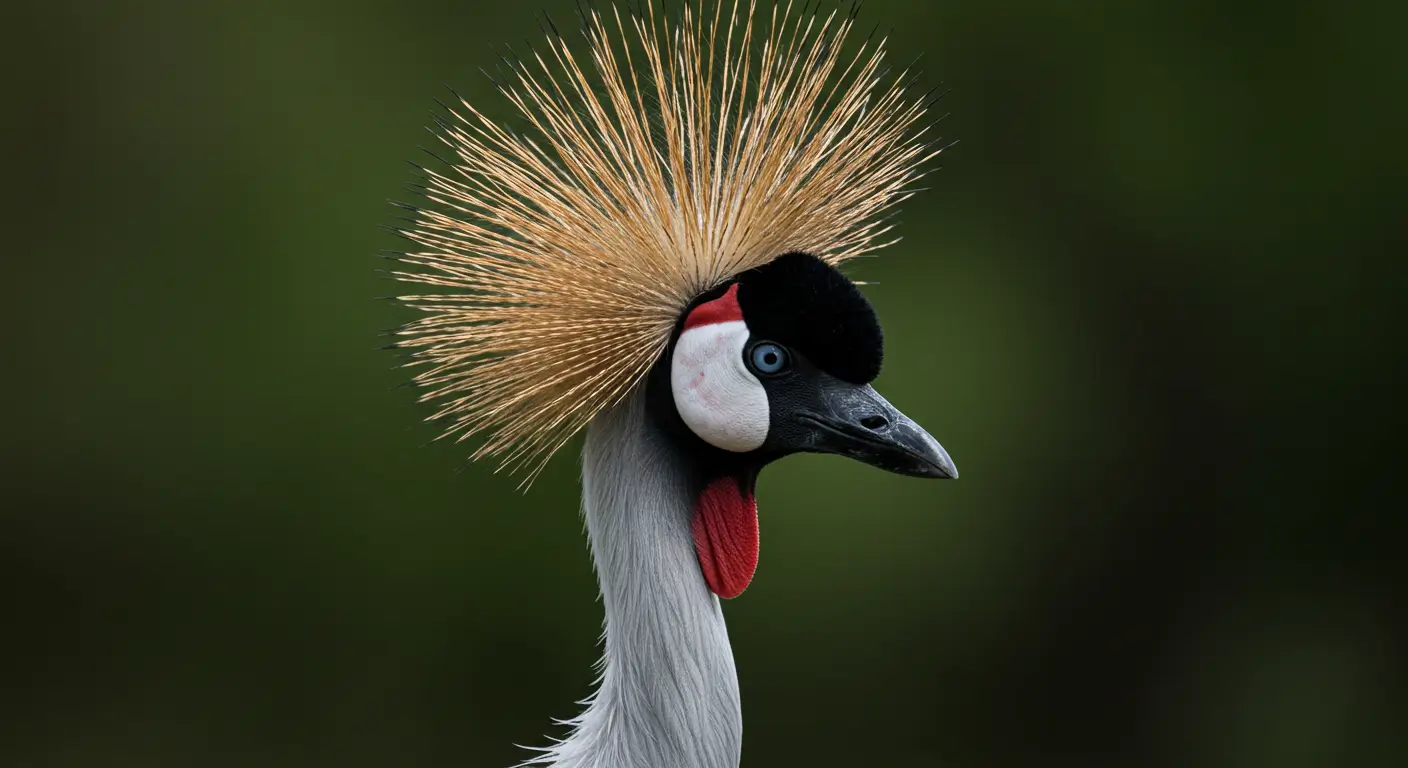
11. National Emblem of Uganda
12. Hatched Chicks are Ready to Explore
13. Use Tools in a Unique Way
14. Only Cranes That Can Rest in Trees
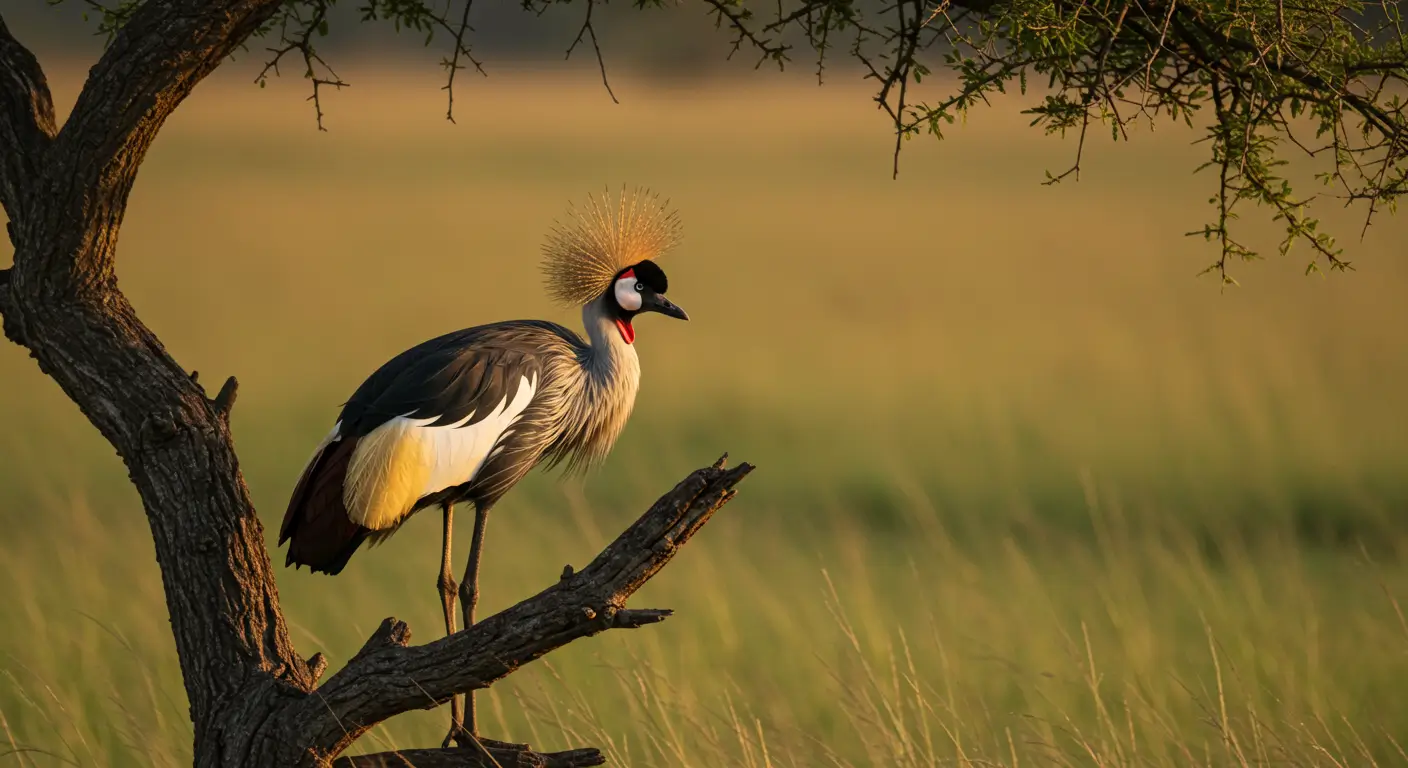
Sightseeing of Crowned Crane
Location
State in Which it is Located
San Diego Zoo Safari Park
California
Bronx Zoo
New York
Dallas Zoo
Texas
Smithsonian’s National Zoo
Washington D.C.
Houston Zoo
Texas
Denver Zoo
Colorado
Woodland Park Zoo
Washington D.C.
Zoo Miami
Florida
Nashville Zoo
Tennessee
Milwaukee County Zoo
Wisconsin
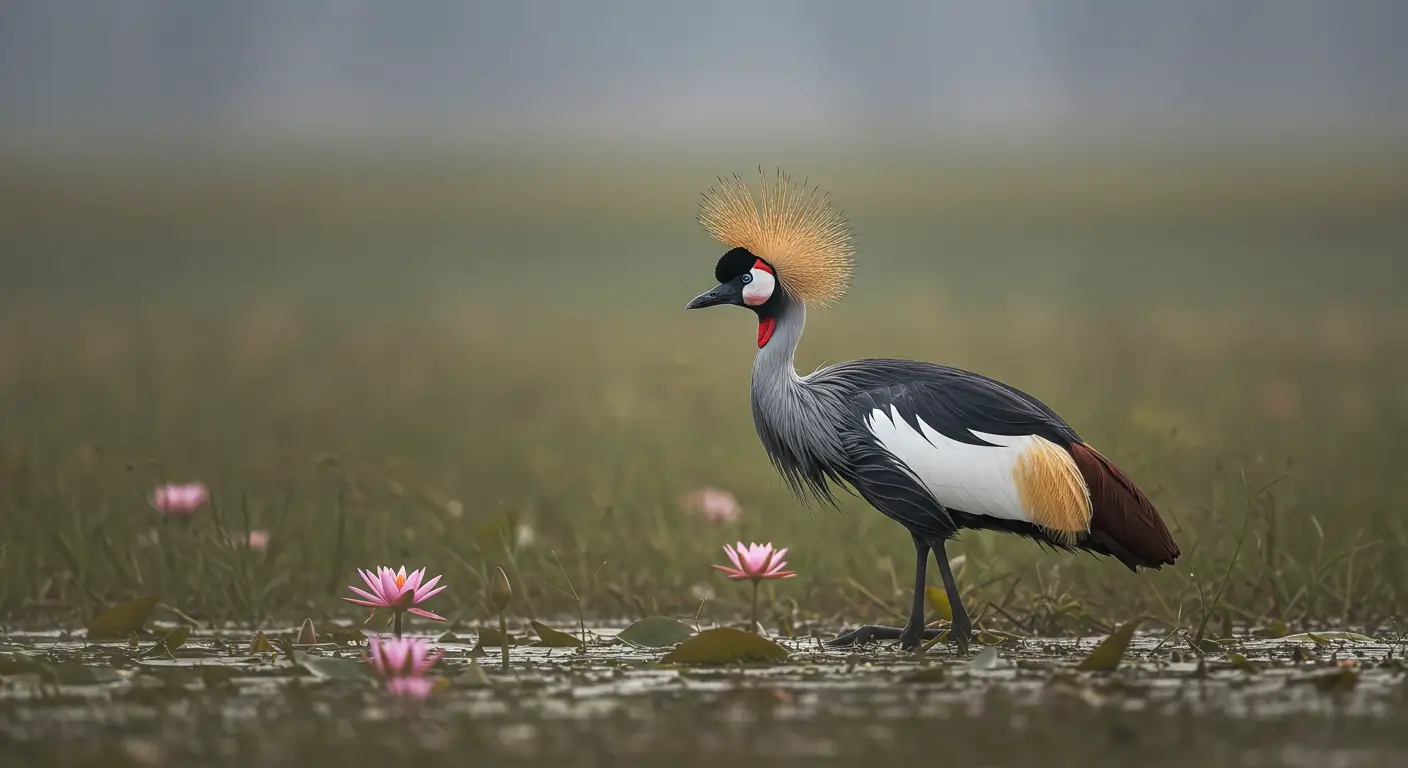
Photography Tips for Crowned Crane
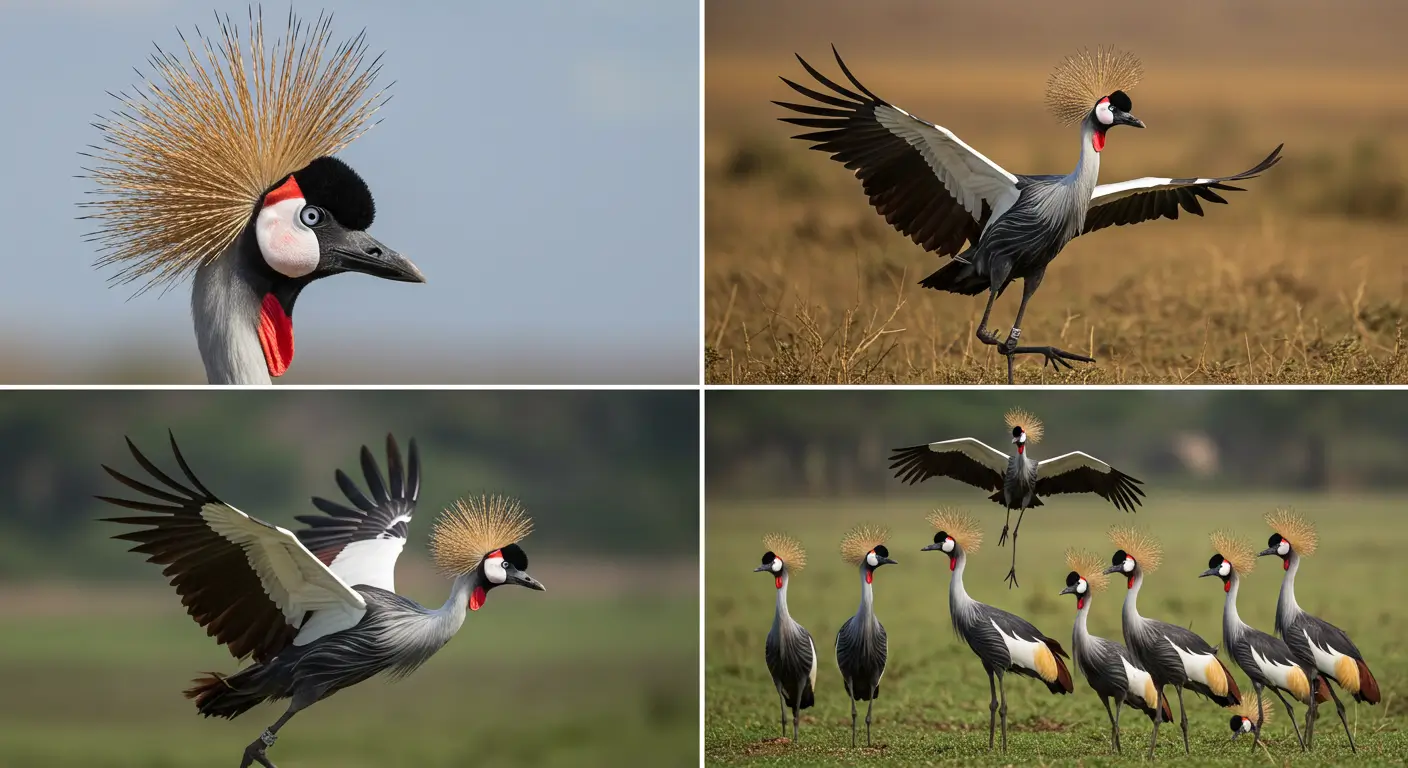
Most Asked Questions
1. What is a Crowned Crane?
2. Why are Crowned Cranes special?
3. Are Crowned Cranes endangered?

